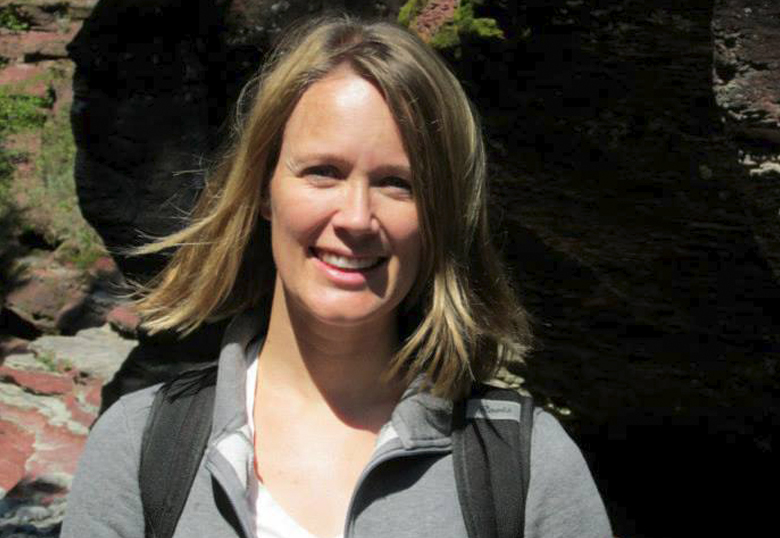Increased leveraging opportunity now available for small to medium enterprises
University of Lethbridge researchers will help quantify the fuel load in Alberta forests affected by the mountain pine beetle, thanks to a Mitacs Accelerate grant in partnership with fRI Research worth $180,000.
Pine beetle study will help guide forest management
Drs. Laura Chasmer and Chris Hopkinson, professors in the Department of Geography and Environment, have partnered with fRI Research, an Alberta-based, not-for-profit organization that that conducts research to improve land and resource management, to collaborate on the creation of a 3-D map to illustrate the distribution of fire fuels in Jasper National Park. Using data from terrestrial and airborne LiDAR (Light Detection and Ranging) scans, two interns, Dr. Zhouxin Xi, a post-doctoral fellow, and Saeid Parsian, a graduate student, will work on the project for two years, with half of their stipend being paid by Mitacs.

“We’re looking at the impact of mountain pine beetle on the vertical and horizontal distribution of fuels for wildfire,” says Chasmer. “This is, of course, of significant interest to Jasper National Park and Parks Canada and especially to the town of Jasper. It allows us to figure out where the fuels are in the landscape and which areas they need to manage or remove those fuels so they can reduce the impact of wildfire.”
Western Canadians don’t have to look very far to be reminded of what wildfire can do. The Kenow Wildfire swept through Waterton Lakes National Park in 2017 and the Lytton Creek Wildfire, which destroyed the Town of Lytton, illustrates how destructive fires can be to communities within the wildland-urban interface.
“In the last 20 to 30 years, wildfires have basically doubled in area,” says Chasmer. “And in the next 20 years, they’re expected to double again. So the combination of things like mountain pine beetle, which is expanding in range because of warming winters and longer, warmer and drier summers, and droughts is making the landscape extremely susceptible to fire. Combine that with 100 years of a colonial type of fire suppression within these national parks and along the eastern slopes and it is a concern that needs to be addressed by fire managers.”
Chasmer says the study will also help demonstrate that prescribed fires and thinning of trees to burn off detritus in a highly managed way is a very important way to reduce the fuels.
“The public, in the past and until now, have not been highly supportive of prescribed burns, because people are worried the fire may become too difficult to manage,” says Chasmer. “Prescribed burns are applied under very controlled conditions to reduce the potential for spread to unintended areas. This is the best way to manage fuels for wildfire and the potential for fires in the future.”

Their research has included surveys all along the eastern slopes, including Waterton Lakes, the Castle Mountain area and Banff. Partners include Alberta Environment and Parks, NSERC (Natural Sciences and Engineering Research Council), Canada Wildfire, Western Economic Diversification Canada, Aries Aviation International and Teledyne Optech.
Mitacs Accelerate grants
Mitacs is a national non-profit organization that works to support collaborations between academia and industry. The Accelerate program is designed to assist companies in hiring interns for a minimum of four months for a $15,000 stipend.
“It allows us to help a company bring on an intern for a period of time and Mitacs typically covers half of that intern’s stipend,” says Hannah Scott, Mitacs business development specialist at the U of L. “From there, as long as the project is longer than four months, we can make a project of nearly any size.”
In the past couple of years, Mitacs has expanded programming and eligibility and Scott hopes to set up more collaborations between the U of L and community partners.
“The really exciting thing is that we have an increased leveraging opportunity for small to medium enterprises (SMEs),” says Scott. “Instead of covering 50 per cent of the intern’s stipend, this lets us cover 75 per cent of the stipend costs for any company with fewer than 500 employees. We’re really excited about this and there are a lot of potential partners in the area that could make use of it.”
Mitacs also offers the Business Strategy Internship innovation program for companies working on new and novel ideas that don’t necessarily involve research. The combination of programs offered by Mitacs provides a wide-playing field.
“Mitacs can work with any sector and any department on campus,” says Scott. “We can work with any for-profit company, eligible not-for-profits, hospitals and municipalities and with students at any level.”
The increased leveraging opportunity is only available for project applications submitted before March 1. For more information, contact Scott by email at hscott@mitacs.ca.
